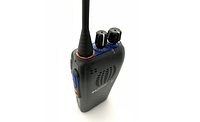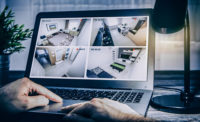How to Ramp Up Your Rox Moxie with Video Technology

- Collect and analyze consumer purchase data from your stores.
- Evaluate market-basket data, leverage that data with promotions and new products, evaluate again, and repeat.
- Look for opportunities to compress the order cycle and implement agile inventory-management models.
- Use technology to get goods to stores faster.
Clearly, technology has a pivotal part to play in helping retailers enhance their customers’ shopping experiences. Tapping into the unprecedented power of video surveillance technology and data can undoubtedly deliver a markedly improved Return on Experience (ROX). The business operations intelligence video provides is far-reaching. Video analytics (VA), for instance, can offer up valuable information about what’s going on in a retail environment in ways that other technologies simply can’t. The practice of heat mapping and monitoring shoppers’ movement patterns was only the beginning.
Analyze This!
VA - the capability of automatically analyzing video to detect and determine temporal and spatial events - relies on quality input video, so it’s often combined with video enhancement technologies such as video denoising, image stabilization, unsharp masking and super resolution. The importance of using a superior camera with exceptional, triple-side de-warping and Smart UX Controls that allows for smooth and intuitive panning, tracking and zooming with ease and accuracy even via mobile devices cannot be overstated. Cameras that deliver high-definition footage all the way to the peripheral can educate retailers on what is catching customers’ attention and what’s not, particularly when combined with analytics, appliances or software. Methods that may have seemed minuscule in the past, including the analysis of shoppers’ footfall, direction of travel and linger time to gauge reactions to advertising and displays, are now deemed effective and practical tools in improving ROX.
Using high-performance video technology, behavior analysis can be applied to a physical retail environment to gain understanding of what potential customers look at, for how long, and what buying decisions they ultimately make. That spells good news not only for an individual retailer, but also for mall operators looking to attract other, viable retail brands. Using video analytics arms them with the ammunition they need to demonstrate that their shopping center has an optimum customer footprint and profile. In addition, video data analysis can be leveraged to understand customer behavior, manage staffing levels and optimize services, giving malls a tangible advantage. Video technology can provide this data in a way that basic heat mapping via Wi-Fi usage, which usually requires shoppers to log in, can’t. Video is virtually the only media that can be harnessed to truly better understand more subtle customer responses, including how they are moving around the mall. This, in turn, helps retailer tailor their messaging, promotions and customer services to improve ROX.
Superior video cameras can also provide other critically important information to retailers to help them reduce shrinkage, enhance employee productivity, and improve their overall operations.
And it’s worth noting that compact and sleek cameras that blend with lighting and aesthetics are particularly suited to store environments, offering the kind of discrete, neat surveillance that isn’t going to spoil anyone’s shopping mood by raising fears about ‘big brother’ or giving them the feeling that crime is a problem in this place.
Logistically Speaking
Logistics - the management of the flow of things between the point of origin and the point of consumption to meet requirements of customers or corporations - usually involves the integration of information flow, materials handling, production, packaging, inventory, transportation, warehousing, and often security. That’s a whole lot of flow to manage, and thankfully, video can be put to the task to help.
For starters, retailers need to build the systems and infrastructure to ensure stock availability and next day delivery, both online and in-store. For eCommerce sales, video can provide visual package audit trails right up to the point of dispatch to guarantee productivity is on par and online customer experiences are positive. For these highly complex, fast-moving integrated business models, the use of analytics, which depends on cost-effective, HD video coverage, is becoming all the more crucial. For brick and mortar stores and mall operators, the latest generation video solutions can provide an easy way in. Although these may be installed to meet current and immediate challenges such as retail shrinkage, safety concerns, compliance, etc., video technology solutions also provide increasingly useful analytics and impressive future-readiness.
Harnessing the intelligence and business operations information that can be gleaned from video technology and big data will undoubtedly be adopted increasingly more by retailers in this new decade. In a recent article, “How Tech Will Transform Shopping In 2020,” Forbes shone a bright light on Predictive Analytics (Big Data). They report that analyzing and using data and predictive analytics enables retailers “to understand important information about consumer purchasing behavior, personalize the shopping experience, address a consumer's needs based on where they are in the customer journey, improve efficiencies and reduce costs of supply chains and more. Predictive analytics helps retailers be smarter, more efficient, and reduce costs.”
A key takeaway message for retailers and their systems integration partners, as we are into a new decade, is that they will need to extend, modify, or upgrade surveillance systems at some point soon to improve ROX – and the time to start planning and budgeting for it is now. Examine forward and backward compatibility that will leverage existing surveillance investments. This kind of flexibility will give retailers a phased and manageable path, integrating video analytics into their wider business operations. This will afford retailers the advantages they need to stay competitive and keep customers in their shops while simultaneously advancing their e-commerce infrastructure.
Providing consumers with an engaging, secure yet friendly shopping experience is what will keep customers coming back for more. Because, let’s face it, everyone, deep down, loves to shop ‘til they drop! And nobody loves to see that more than retailers. Video technology is giving them the eyes to help realize that vision.
Looking for a reprint of this article?
From high-res PDFs to custom plaques, order your copy today!






